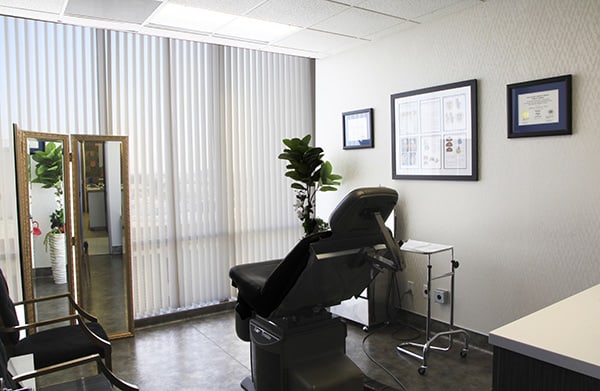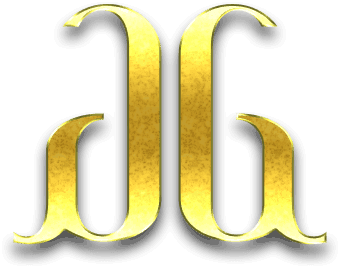Revision Rhinoplasty in Beverly Hills
Not everyone is always happy with the results of their nose job. Some people may feel even more self-conscious of their nose after rhinoplasty than they did before surgery. This may be because: 1) the nose surgeon was inexperienced or carried out improper technical steps; 2) the results do not resemble what the patient originally expected; or 3) a new problem or problems developed after surgery. Overall, the issues fall into two categories: the previous surgeon’s technical execution was “overly aggressive” or it was “not extensive enough” to affect an appropriate change in nasal shape.

PLEASE NOTE: Dr. Ghavami feels strongly that it is poor etiquette to “bad mouth” or discuss your previous surgeon’s work. Sometimes, the rhinoplasty results just don’t turn out the way your surgeon intended. Instead of focusing on the negatives, Dr. Ghavami believes it is best to move forward and consult you on what he can now do to correct and improve the issues you have with your nose. This is the policy at Ghavami Plastic Surgery. Unfortunately, this is not always the case with all surgeons. We urge you to think twice about having surgery with a surgeon who is ready to perform your revision and quick to “bad mouth” another surgeon’s work.
Dr. Ghavami is widely-regarded as one of the top rhinoplasty specialist in Beverly Hills because he is capable of restoring beauty to the nose and overall facial appearance through revision rhinoplasty, also called secondary or corrective rhinoplasty. Most plastic surgeons that have a practice dedicated largely to rhinoplasty also receive requests to correct unsatisfactory results they received from a previous surgeon. Dr. Ghavami’s goal is to re-sculpt the nose, make patients look as if the primary nose job had never been performed, creating a new nose that is in balance with the face. Revision rhinoplasty is typically a much more complex procedure than primary rhinoplasty, and therefore requires an extremely skilled and experienced cosmetic surgeon.
Reasons for Having Revision Rhinoplasty
Here are some of the most common reasons for seeking revision rhinoplasty:
- Artificial or unnatural nasal appearance
- Persistent nasal hump
- Saddle nose or over-reduced bridge (Inverted V-Deformity)
- Over-rotated or under-rotated tip
- Crooked tip or crooked nose
- Asymmetry in the tip, upper third or middle third of the nose
- Hanging columella or retracted columella
- Displaced nasal implant or extruding nasal implant
- Nose is not in balance with the rest of the face (too big or too small)
- Breathing problems / nasal obstruction
Dr. Ghavami’s Revision Rhinoplasty Experience
Dr. Ghavami spent years studying with some of the foremost experts in rhinoplasty at the University of Texas Southwestern Medical Center. Furthermore, he completed an advanced fellowship program and studied microsurgical concepts. This provided vast experience in working with delicate structures in the face and body. Dr. Ghavami has strived to position himself in the upper echelon of rhinoplasty surgeons in terms of experience and contribution to the advancement of rhinoplasty. “I feel honored to be continually invited to sit on expert panels among the numerous leaders in the field for which I have long had tremendous respect for,” he says.
Another strength of Dr. Ghavami is his specialization with ethnic rhinoplasty, including African American rhinoplasty, Hispanic rhinoplasty, Middle Eastern rhinoplasty and Asian rhinoplasty. He is very familiar with the intricate details of each ethnicity’s features and is especially skilled in preserving a patient’s ethnic identity while improving the features that they dislike. Many patients seek out the services of Dr. Ghavami because they are unpleased with the results of their primary ethnic rhinoplasty procedure, often because their original nose surgeon over-corrected or under-corrected the nose. Dr. Ghavami is able to transform these results, delivering the outcome the patient was originally seeking. In fact, he was recently invited to write a textbook chapter on “Secondary Middle Eastern Rhinoplasty,” in which he described ways to not only correct previous misjudgments but to prevent these issues in the first place.
Revision Rhinoplasty Considerations
Before performing revision rhinoplasty or revision ethnic rhinoplasty, Dr. Ghavami works with the patient to identify the reason he or she is unhappy with the results of the primary rhinoplasty and then sets specific and realistic goals for the revision procedure. Vague statements or abstract goals are counterproductive and will not help Dr. Ghavami develop a successful treatment plan.
It’s also important not to be premature in decisions regarding revision rhinoplasty. Swelling distorts the final results of a nose job; it can take a year to 18 months for the swelling from a primary rhinoplasty to fully dissipate.
In the case of over-correction, there may not be enough cartilage left to properly sculpt the nose. Dr. Ghavami may need to graft cartilage from other areas of the body to reconstruct the nose. Common cartilage sources are the ear and ribs. The patient may also have scars and tight skin from the primary rhinoplasty procedure. When these factors come into play, revision rhinoplasty essentially becomes much like a reconstructive surgery, which is why it’s critical to have an experienced rhinoplasty surgeon like Dr. Ghavami. By selecting a rhinoplasty specialist, the risk of needing a third or more revisions in the future is drastically reduced.
Schedule a Revision Nose Job in Beverly Hills
If you are not satisfied with the results of your first rhinoplasty, and would like to explore your revision rhinoplasty options, please contact the Beverly Hills plastic surgery office of Dr. Ghavami to schedule a consultation. You may email or call us today.









